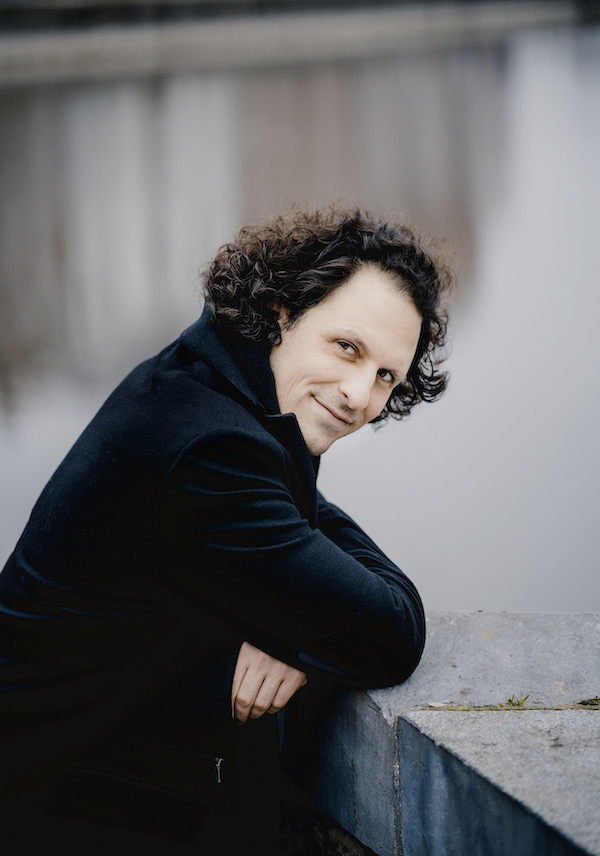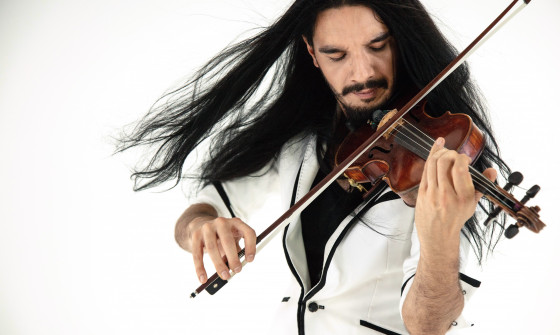Conductor, violinist show versatility in Covid-revised Utah Symphony program
The note on the Utah Symphony website stated ominously “THIS PROGRAM HAS BEEN ALTERED DUE TO COVID CASES AND EXPOSURE IN THE ORCHESTRA.”
In fact, the orchestra’s planned program of challenging 20th and 21st century music was scrapped entirely for an evening of music from the Romantic Period. On Monday, symphony musicians sitting near colleagues who tested positive for Covid were told to stay home this week, and the orchestra, guest conductor Alexandre Bloch, and violin soloist Nemanja Radulovic scrambled to find new pieces that would work with roughly a third of the orchestra missing.
In place of the scheduled piece by Finnish composer Kaija Saariaho called Winter Sky, Khachaturian’s Violin Concerto, and Bartók’s Concerto for Orchestra, the retooled lineup offered Faure’s Pavane, Tchaikovsky’s Violin Concerto, and Mendelssohn’s Symphony No. 4. Despite the hectic circumstances, the concert was a spectacular success, marked by several standing ovations from the appreciative audience.
Bloch, who is based in France, took a subdued approach to the Fauré in his Utah debut, focusing on achieving just the right balance with the pizzicato strings and the carefully blended woodwinds. When the strings took the melody, they sounded smooth but restrained, lacking the shimmer and full sound often achieved under music director Thierry Fischer. Overall, the interpretation was serene, with conscientious phrasing, but not enough dynamic variation to make it memorable.
The Tchaikovsky, by contrast, featured every dynamic level and mood imaginable. Wearing Doc Marten combat boots, dramatic flared slacks, a tight scoop neck silk shirt and tuxedo jacket—all jet black—the Serbin-French Radulovic turned in an interpretation that was idiosyncratic and at times indulgent yet made musical sense. If not for the exigent circumstances, it’s unlikely the orchestra would have programmed the Tchaikovsky concerto, having played it in February with young phenom Daniel Lozakovich. Still, when compared with Lozakovich’s understated, naturalistic interpretation, it hardly seemed like the same piece.
Throughout the concerto, Radulovic’s tone was clear and straight, with very little vibrato, which facilitated his legato articulation as he dug into each melodic line. He also took extreme liberties with the tempo, which Bloch did his best to follow. His entrance in the first movement was severe and deadly serious, but he played the return of the main theme playfully, with sudden dips in volume and an exaggerated flourish. Between dazzling runs, his first movement cadenza featured moments where he played extremely softly, almost inaudibly.
Bloch conducted the moody Canzonetta without a baton, shaping each phrase with his hands. Due to its reduced numbers, the orchestra had a trombone filling in for one of the horn parts (which the score allows “for small ensembles”), but the blend in the woodwinds and brass remained exquisite as it set the tone for Radulovic’s subdued entrance. Soon after entering, he turned and faced concertmaster Madeleine Adkins, and the string section appeared to respond to the gesture by reflecting the swells in his phrasing. The piece built ominously, exploding into the finale with a passionate flourish from Radulovic.
The violinist’s dazzling technique and precise articulation were on full display during the fiery third movement. The orchestra rose with Radulovic in the exuberant moments and followed him through the climactic finish. His encore was a scenery-chewing rendition of Paganini’s famous Caprice No. 24, which displayed his technique and musicality even more than the Tchaikovsky.
For Bloch and the orchestra, the evening’s high point was their transcendent rendition of Mendelssohn’s Fourth Symphony, the “Italian.” Bloch brought out his baton for the first movement, and from its buoyant beginning, he shaped each phrase to build to a joyful climax. He paid close attention to articulation, playing the galloping minor key sections in a crisp staccato, making sure the two-note slurs had clear cutoffs, and coaxing longer, rising phrases in a warm legato. Bloch put down his baton again for the second movement, which was a study in balance, blend, and counterpoint. He built clear phrases on top of a well phrased moving line in the double bases, to spellbinding effect.
The orchestra sang throughout the earthy third movement and danced their way through the exuberant finale, nailing the dotted rhythms that propelled the piece through its exciting conclusion. Bloch may have been hoping to tackle the scheduled Bartók, but it was a good thing for the audience that he—and the orchestra—had the Mendelssohn in their back pockets for emergencies.
This revised program will be repeated 5:30 p.m. Saturday. www.usuo.org


Posted Sep 19, 2022 at 9:47 am by Susan Harada
My husband and I flew from southern Orange County to witness our second and third Radulovic Concert….something we have never done before!
Not only was our first visit to SLC a WONDERFUL experience, but seeing Radulovic was the high point of our year! Absolutely otherworldly! I was literally breathing his Tchaikovsky rendition. Bravo!!